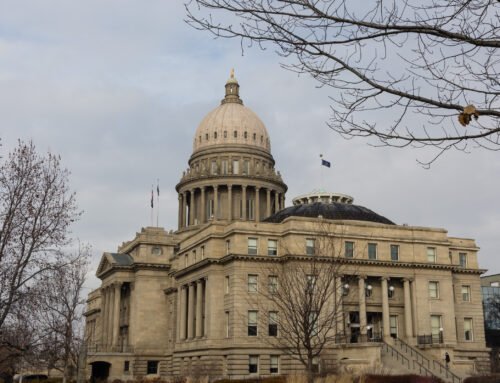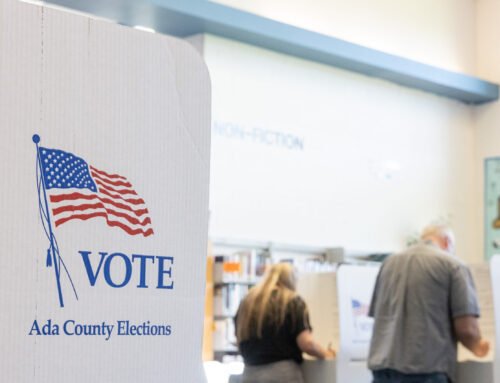An audit into the Idaho Department of Health and Welfare’s distribution of grant funds to help children deal with the after effects of the pandemic found that “lack of controls throughout the program” led organizations that received the grants “to use the funds for ineligible purposes and for ineligible groups.”
Health and Welfare Director Dave Jeppesen, in a statement issued Monday night, disagreed with all findings in the audit. The audit was ordered by the Idaho Legislature’s budget committee this year and conducted by the Legislative Services Office, the research arm of the Idaho Legislature. The Idaho Press reported in February that the Legislature’s budget committee authorized an audit of the program.
“While we agree with the many factual observations in the report that recognize the diligence and thoroughness of the department’s process, the department respectfully disagrees with all of the report’s findings,” Jeppesen said in the statement.
Idaho AG can’t pursue civil demands in child care grant case due to conflict, judge rules
The release of the audit Monday comes as Idaho Attorney General Raúl Labrador faces three lawsuits over his demands for information from senior Health and Welfare department officials, an ex-department official and 36 organizations that received the grants.
An Idaho judge recently barred Labrador from pursuing his investigation into the grants, unless he appoints a special prosecutor, the Idaho Capital Sun previously reported. The judge’s decision centered on the Attorney General’s Office providing legal guidance twice to the Idaho Department of Health and Welfare that found that the department did not violate laws in how it disbursed the grants. The judge said the guidance created a conflict.
Another lawsuit around Labrador’s demands for information, involving 36 organizations, has been accepted on appeal to the Idaho Supreme Court.
What are the child care grants?
The Idaho Legislature appropriated $36 million to Health and Welfare in 2022 through legislation that directed the funds be used for community partner grants that address the pandemic’s impacts on school-aged children, including learning loss. The bill specified that the grants should be used for school-aged children 5-13 years old, but said that the department should follow federal guidance. The Legislature also awarded grant funds in 2021.
A legal memo a deputy attorney general issued to the Department of Health and Welfare in January 2023 said that the agency’s administration of the grants was legally sound. The memo said that when considering federal and state guidelines together, the grants must include kids aged 5-13 years old — but not be limited to them, since federal guidelines didn’t call for age limits. And the department’s applications specified that grants should serve 5-13 year old children, the memo noted. A previous legal analysis provided by the AG’s Office – when former Attorney General Lawrence Wasden was still in office – in November 2022 had similar findings.
What the Legislative Services Office audit found
The audit claimed that the department doled out $427,000 more than allowed, and that the agency did not properly document grant decisions, show proof that the grant awards complied with age requirements and did not “properly review applications” to make sure “ineligible expenses were not included.”
“Based on the evidence available, the lack of controls related to expenditures of public funds allowed for recipients of the grants to use funds received for ineligible purposes and for ineligible age groups that did not meet the purposes specifically defined in the application laws. The findings are serious enough to report to the Idaho Attorney General,” for misuse of public funds, the report concluded.
The Department of Health and Welfare said it hopes that the Attorney General’s Office finds that the funds were distributed legally.
“All along, we have welcomed independent, unbiased review of the department’s administration of the Community Partner grants,” Jeppesen wrote in his statement. “We will meet any review, audit, or investigation with cooperation because we stand by our work. We await the AG’s next step with confidence knowing the grants were distributed legally, as affirmed by his office. In addition, adequate controls were in place to ensure the grants went only to eligible purchases on behalf of eligible children,” Jeppesen said.
The Legislative Services Office outlined eight findings in the audit:
Finding 1: “The Department did not maintain sufficient documentation to support award decisions for the Community Partners Grants.”
Auditors found proof that evaluations happened but did not find documentation on who completed them and when. Thirty-two of 109 scoring rubrics in phase one of the funding distribution were not available for auditors to review, the report said. All rubrics for the second phase were available.
Health and Welfare said information from individual rubrics was kept in the “collective scoring decision,” which is what was used to process applications. The department also says Idaho and federal law did not require that individual rubrics be kept. “In previous grant awards, IDHW has followed similar record retention practices, maintaining the collective scoring information but not the individual scoring rubrics, with no deficiencies identified.”
Finding 2: “Some Community Partners Grant Programs received more than the maximum amount allowed by statute through the submission and approval of multiple applications using variations of the entity name while relying on the same tax identification number, address, and phone number.”
The report listed University of Idaho 4-H Extension program as an example, which received grants through several of its different programs in counties across the state and through other programs, for a total of $12.7 million. The department said it defined a provider as “an operator of a program, not a single entity.”
The grant program, the department said, let organizations submit multiple unique and specific applications for programs. The audit replied that “we continue to assert that approving multiple grants to different ‘programs’ under one entity’s tax identification number, contact person, etc., reduces the opportunity for that program to reach more community providers.”
Finding 3:”The Department did not provide evidence that they ensured compliance with age requirements for the Community Partners Grants awarded, as required by the legislative appropriation bills.”
The audit found that 28% of 145 grant applicants served children outside of the 5-13 age group. And the audit said that the department didn’t design procedures to make sure only kids in that age group were served. The department repeated legal analysis it received that said its use of the funds was legally sound, and repeated a decision by Ada County Judge Lynn Norton that said grant recipients would violate state law “if the recipients only serve children four years old or younger or only provide online educational or enrichment activities,” later finding that the Department and officials “were justified in relying on the opinions … provided by the Attorney General’s Office.”
Finding 4: “The Department did not properly review applications for the Community Partners Grants to ensure that ineligible expenses were not included in the applicants’ budget plan, nor did they document an identification or correction of these ineligible expenses prior to approval and distribution of funds”
The Department said it did review applications and took “corrective action if applications included ineligible expenses.”
Finding 5: “Status reports required to be submitted by the Community Partners Grant recipients were inadequate to ensure funds were spent in accordance with the requirements of the program.”
The department says “status reports were not a requirement of the Legislature’s intent language or the federal funding.”
Finding 6: “The Department did not properly document award decisions related to coverage areas identified by the applicant for the Community Partners Grant recipients to ensure the areas identified, and thus the funding provided, were appropriate.”
The Department said the appropriation bill didn’t specify how to document how grants were awarded to coverage areas, so it relied on federal guidance that said “attestations” were enough, including check boxes for providers to mark.
Finding 7: “The payments distributed by the Department for phase 1 of the Community Partners Grant exceeded the” $36 million appropriation by $427,350
The Department said that the 2021 bill did not cap the monies to be used because it didn’t use the word “only.”
Finding 8: “Payments to Community Partners Grant recipients were not made on time, in accordance with statutory requirements, for a total of four out of seven required payment periods in” fiscal years 2022 and 2023.
In 60 surveyed grant payments among $66.9 million in payments over seven funding periods, auditors found that 27% of payments were late. The department said it “was tasked with an aggressive 21-day implementation.”
GET THE MORNING HEADLINES DELIVERED TO YOUR INBOX






Leave A Comment